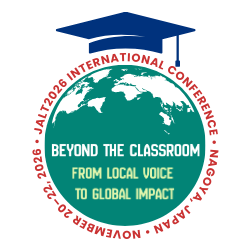Teaching for Social Change: Why Privilege Awareness Education is Effective
Given the persistent racialized bullying and online harassment against minority ethnic groups and people with mixed roots ancestry in Japan, not to mention the misogynistic and homophobic comments made by public figures, it is imperative that educators engage our students about diversity and inclusion. Social justice education that incorporates a privilege-awareness component is an effective way to counter the disinterest and indifference students feel toward daily injustices.
The word “privilege” (or tokken in Japanese) in Japan is used to mean advantages gained due to temporary status, such as college students having the temporary “privilege” of enjoying long summer breaks compared to the rest of society, or “first year college students having the privilege of being treated for free meals by the senior students.” The word has also been used to refer to the social class elite or tokken kaikyu. The word unfortunately is also part of the name of the ultra-right wing nationalist hate group Zaitokukai, which explains why many Japanese have negative associations with the word. In this article, privilege is defined as “unearned advantages and power based on dominant social group membership” and one of my goals is to spread this word and this definition in Japan.
Most people, unless they are deliberately taught about the concept of privilege, live life without recognizing that they have privilege. They can live life feeling bad about the injustices around them, but they may not feel personally accountable for them. There are several reasons why people have difficulty noticing their privileges. One is that people in dominant groups have a self-view of themselves as individuals, not as members of a group, rendering their position and status invisible (DeMott, 1990). Another reason, which refers to structural linguistics, is that the markedness of language reveals how relationships are asymmetrical and hierarchical when there are two groups (dominant versus subordinated) (Waugh, 1982). For example, in Japan, male actors are called actors or haiyuu but women actors are called joyuu whose first kanji is the character “female.” The dominant group is “unmarked” because it is considered normative, while the subordinate group is “marked” because it is labeled as “different.” Thus those in the dominant group go “unmarked” and thus do not have to think about their identity—in this case, their gender. A third reason can be explained by standpoint theory which states that people who possess less power in society need to be and are aware and sensitive to the perspective of those who hold power over them, yet those who are most powerful in society are strongly motivated not to know a lot about the people they dominate and not to develop a sensitive understanding of the structures that preserve their power (Harding, 1986). This creates a unique dynamic where those who recognize that they don’t have privilege are the ones with minority status in society.
What is problematic about people who are unaware of their privileges? Without privilege awareness, people live under the skewed perception that the world is not tilted in their favor. This makes them feel free of any accountability from the existing structural oppression. When governments or organizations take corrective measures to rectify a structural issue to support minority groups (e.g., affirmative action policies), people often feel that these measures are unfair and it is a form of reverse discrimination. An RBG T-shirt that reads “To Those Accustomed to Privilege, Equality Feels Like Oppression” states this well.
There are many benefits to becoming aware of one’s privileges. One is that people in dominant groups can see how they are often complicit in maintaining the status quo and thus are part of the problem. Being well-intentioned is not enough. Thus privilege awareness brings a sense of accountability for social change. People in dominant groups learn that they can use their privilege to effect social change. For example, when women call someone out about making a sexist remark, they are often dismissed or accused (unfairly) of ‘being biased’ or ‘too sensitive,’ whereas when men call it out, their words may be viewed (again, unfairly) as more ‘objective’ and ‘neutral’ compared to women. Thus, people with dominant identities can and should use their privilege of “being heard,” “being believed,” and speak up against harassment and discrimination.
People in dominant groups can become allies. An ally refers to a person who is a member of a dominant group, but takes action against discrimination and injustice against people of subordinated groups. For example, men who oppose sexism, Japanese people who oppose discrimination against non-Japanese living in Japan, and straight and cisgender people who oppose homophobia and transphobia are such examples. Not everyone may become an ally, but increasing the number of allies to reach a critical mass can lead to substantial societal change.
When teaching about privilege in the classroom, a useful theory is the racial identity development theory by Helms (1990). The model developed by Helms’ included six stages which whites undergo in order to develop a healthy white racial identity: (1) Contact, which is characterized by lack of awareness of institutional racism or own white privilege; (2) Disintegration, marked by feelings of guilt, shame, anger at the awareness of one’s privilege and role in maintaining a racist system; (3) Reintegration, marked by experiencing of societal pressure to accept status quo (racism) leading to the avoidance of people of color; (4) Pseudo-Independent, which involves a stage of self-examination where whites seek information about people of color and begin to question previous definition of whiteness; (5) Immersion, in which whites seek accurate information about what it means to be white in U.S. society; and (6) Autonomy, which involves a newly defined sense of self as white and confronts racism and oppression in one’s daily lives. When teaching students, I replace “white” with “Japanese” in this model and ask my students to reflect on where they are in this model. The model allows us to see that privilege awareness comes in stages, and we can also see the complexity of this process as it requires a lot of self-work to move through these stages.
I end by reflecting on my own privileges. As a cisgender straight Japanese female college professor who is fluent in Japanese and English, my gender is the only subordinated identity I have. This gives me enormous advantages in navigating Japanese society. Having a comparative perspective of living in both North American and Japan, my daily experience in Japan reminds me of my unearned advantages as a Japanese person in Japan. I am treated like an individual and not through the lens of a stereotype. People see me as non-threatening and as “one of them.” I hope to use these privileges to further social justice education in Japan.
References
DeMott, B. (1990). The imperial middle: Why Americans can’t think straight about class. New York: Morrow.
Harding, S. (2009), Standpoint Theories: Productively Controversial.” Hypatia, 24(4), 192–200.
Helms, J. E. (1990). Black and white racial identity: Theory, research, and practice. Westport: Greenwood.
Waugh, L. R. (1982). Marked and unmarked: A choice between unequals in semiotic structure. Semiotica, 38(3-4), 299–318.


